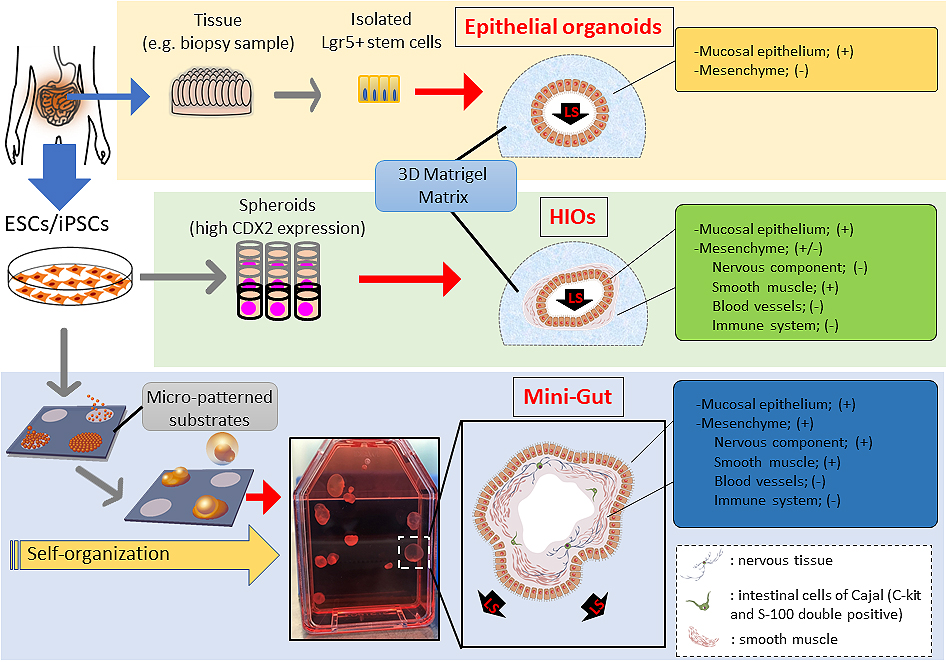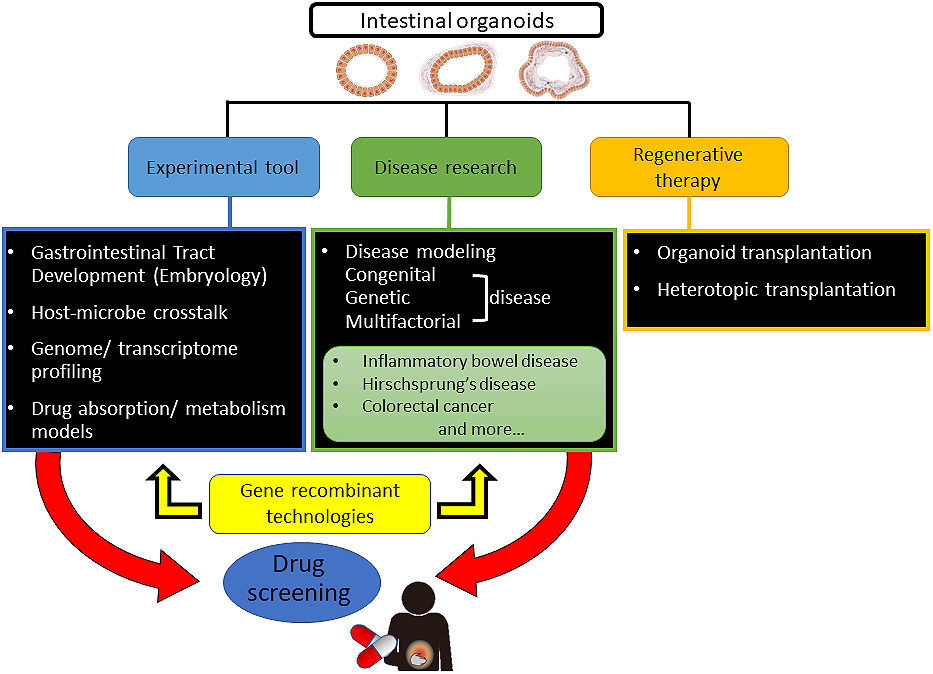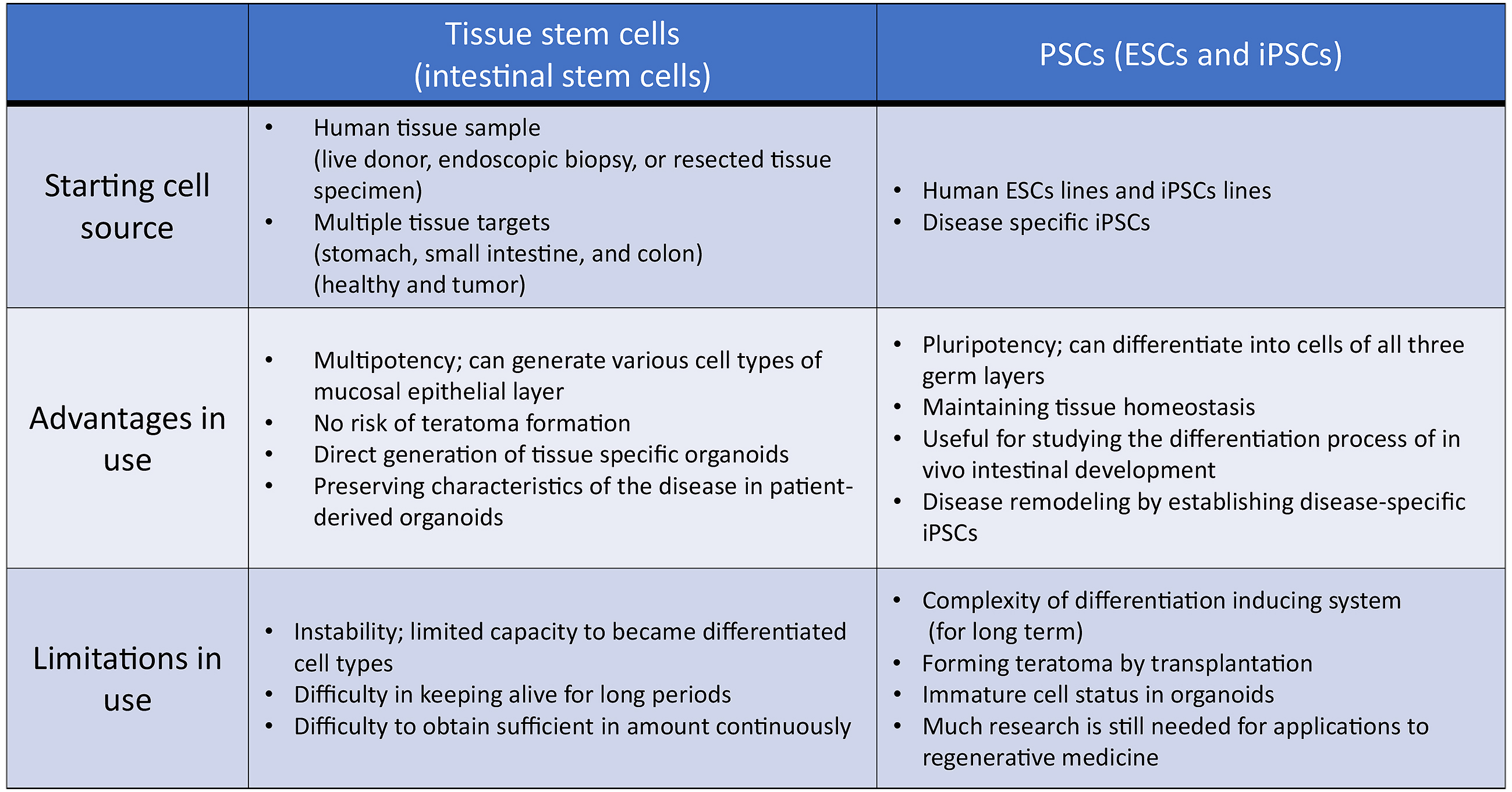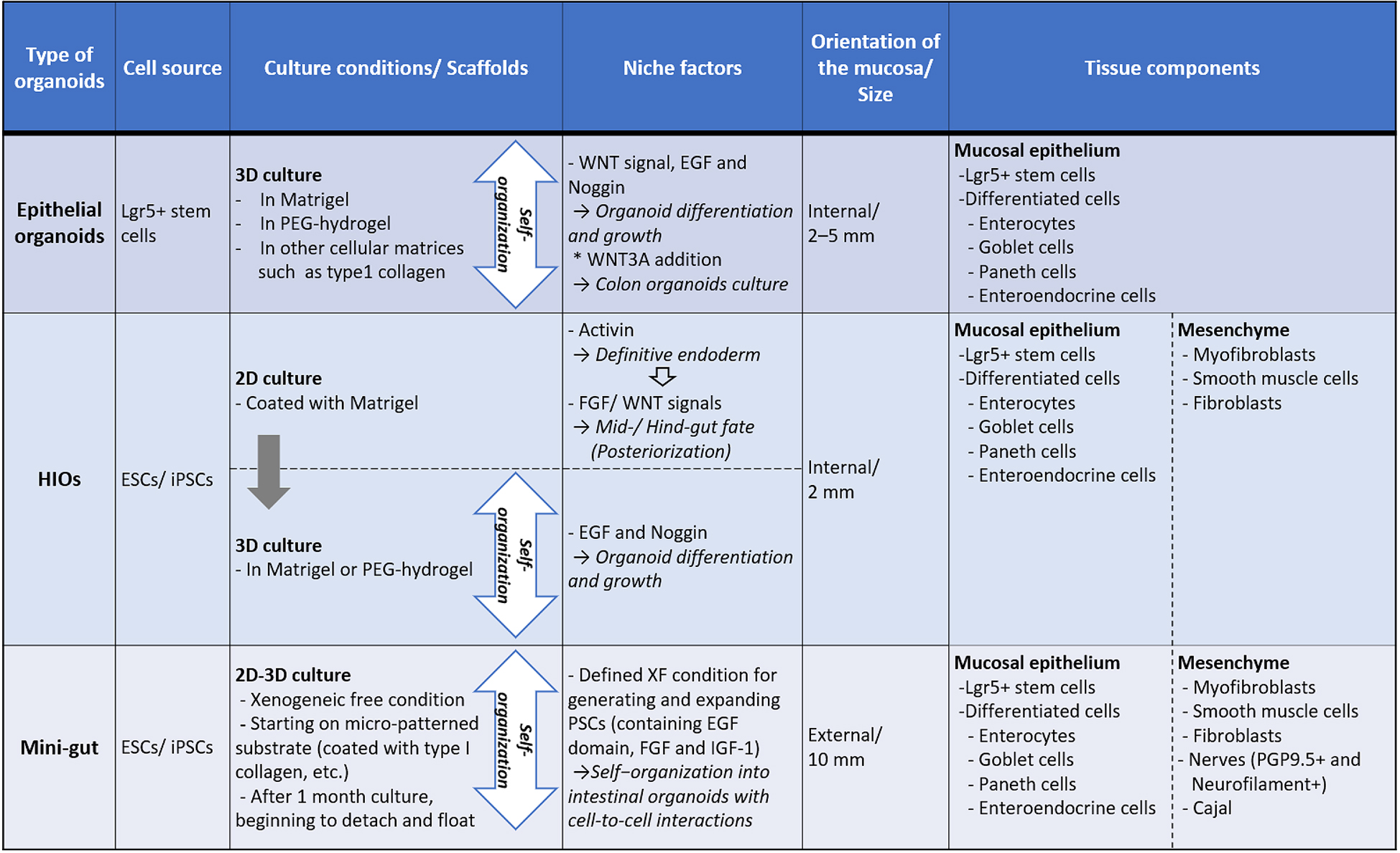Figure 1. Intestinal organoids are generated from either isolated intestinal stem cells or human embryonic stem cells (ESCs)/induced pluripotent stem cells (iPSCs) in vitro. Lgr5+ cells isolated from collected tissue are embedded in a three-dimensional (3D)-Matrigel suspension culture and grow into organized epithelial organoids. Pluripotent stem cells (PSCs) differentiate into CDX2 expressing spheroids containing endoderm and mesoderm and subsequently grow in Matrigel (HIOs). Mini-Guts are self-organized from PSCs in a xenogeneic-free culture condition. The Mini-Guts contain intestinal epithelium and mesenchymal layers, with the epithelial layer as an outer layer. LGR5+, leucine-rich repeat-containing G-protein-coupled receptor 5 positive; LS, luminal side.
From: Intestinal Organoids Generated from Human Pluripotent Stem Cells

Figure 2. Applications of intestinal organoids. Intestinal organoids provide new opportunities for studying development of the gastrointestinal tract, host–microbe crosstalk and human diseases including inflammatory bowel disease, Hirschsprung’s disease, and colorectal cancer. With genome and transcriptome analysis, organoids reflect individual drug absorption and metabolism and can be used for drug screening, leading to the development of personalized treatment strategies. Gene recombinant technologies can also be exploited for studying specific genetic alterations and signaling pathways and making disease models. The study of organoid transplantation and maturation is also in progress, to use organoids in regenerative medicine.
From: Intestinal Organoids Generated from Human Pluripotent Stem Cells




